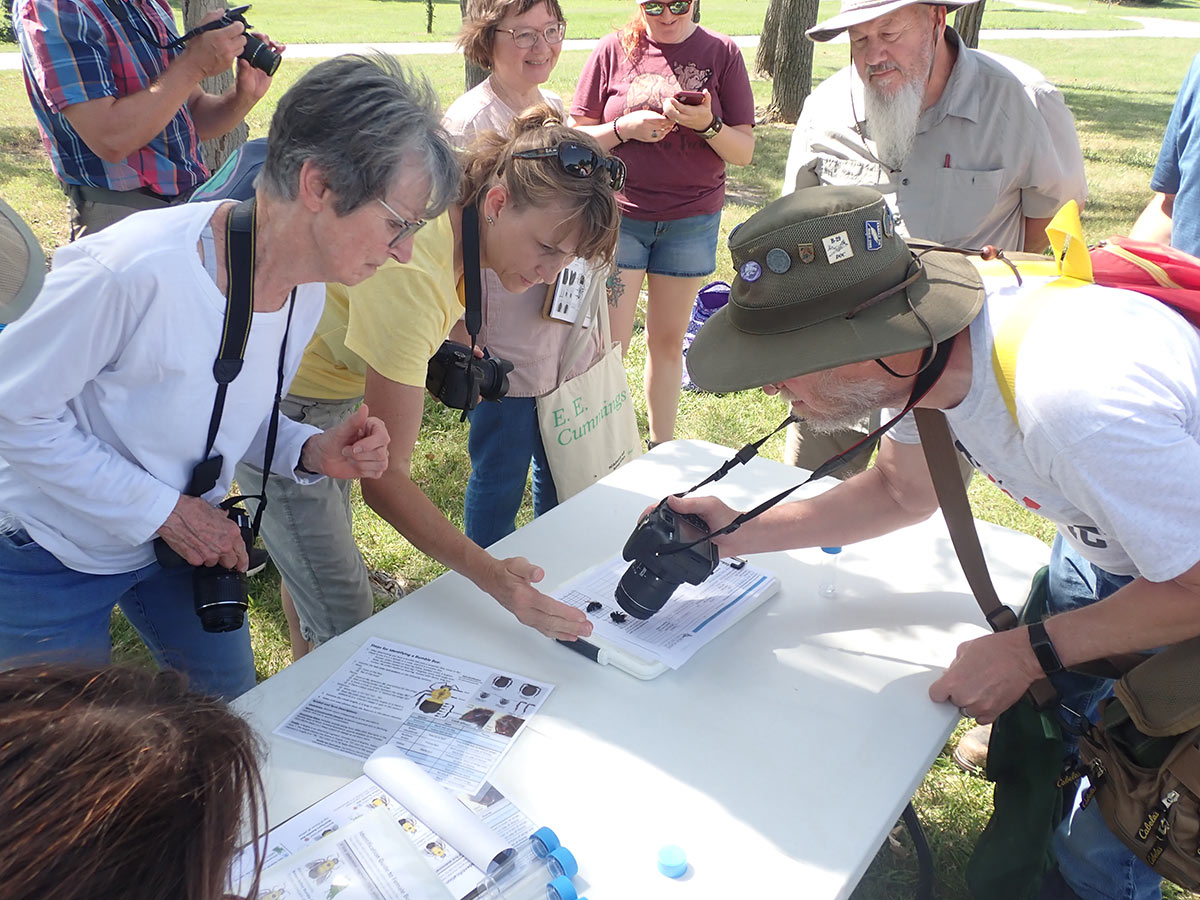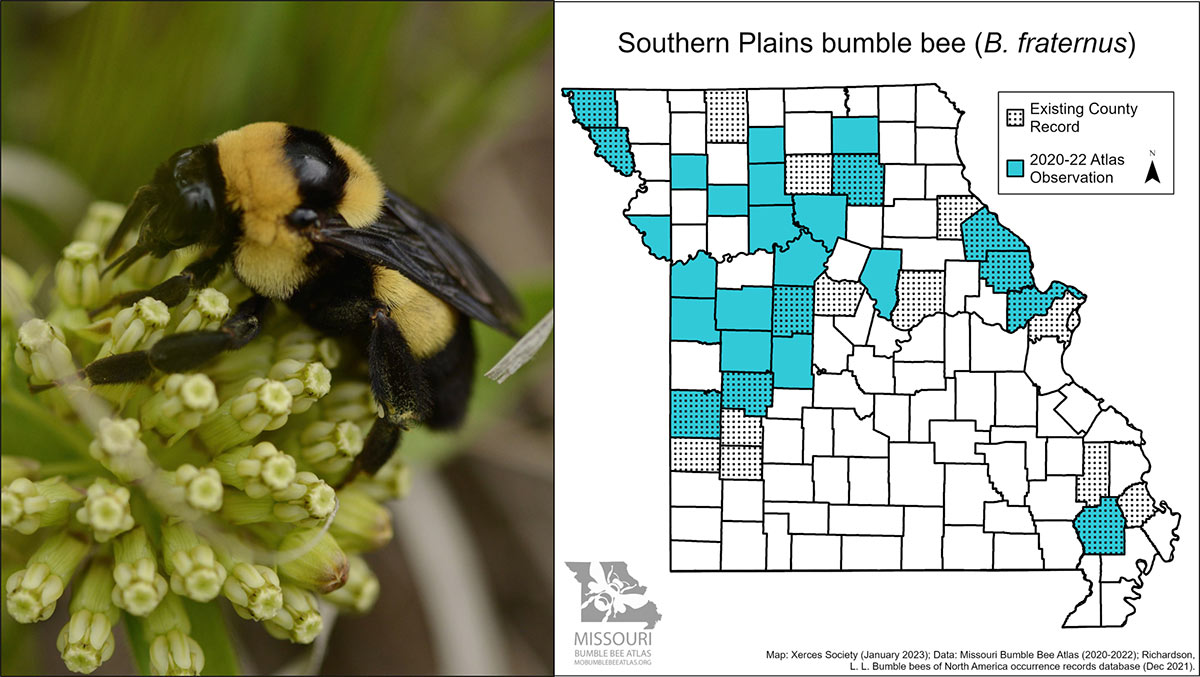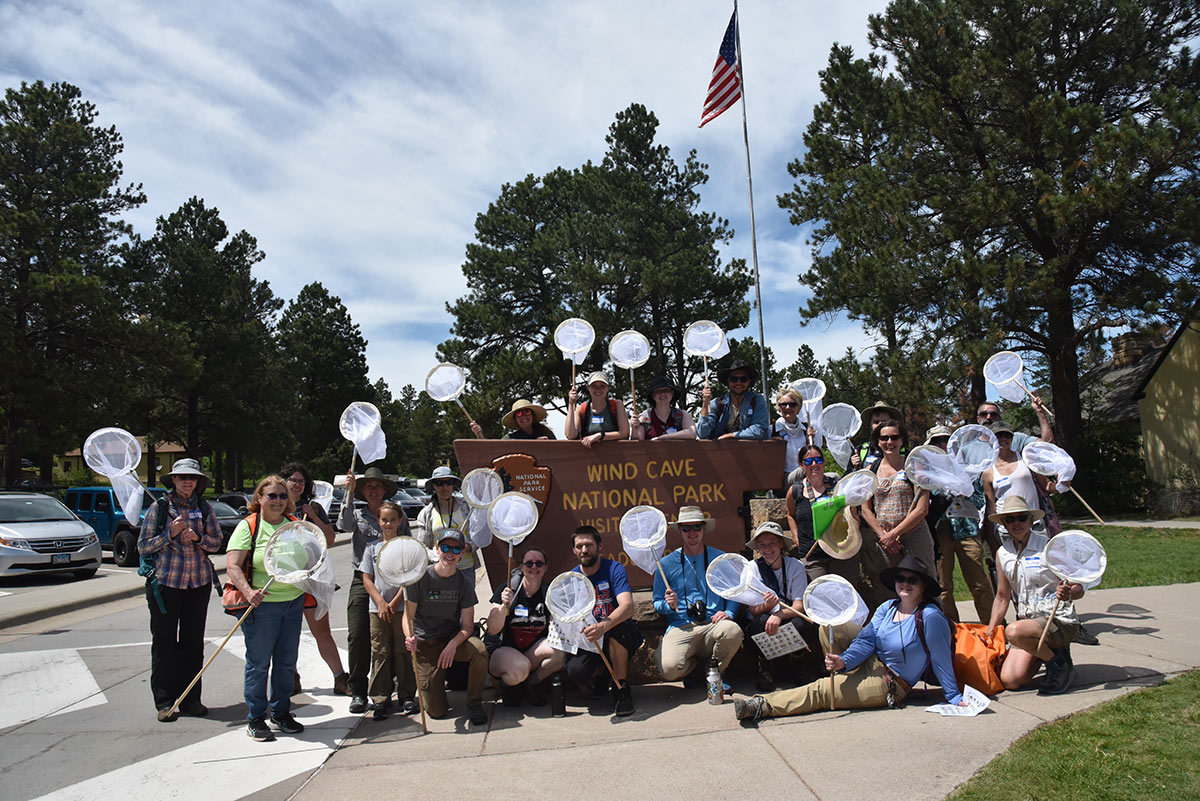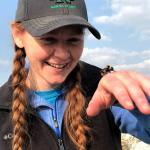Traversing the vast grasslands from North Dakota to Kansas, through the glades of Missouri and wetlands of Minnesota, hundreds of community scientists roamed the Midwest last summer in search of bumble bees.
The Xerces Society’s Bumble Bee Atlas program has been growing across the U.S. since 2018, filling key knowledge gaps including species distributions, habitat associations, foraging preferences, and more. The Midwestern and Great Plains states, in particular, have been historically under surveyed relative to some areas. Thankfully, the Bumble Bee Atlas is beginning to change that, with volunteer community scientists taking on an active role in pollinator conservation.
Each participant is trained on the ecology and conservation of bumble bees, identification of regional species, and the steps involved in conducting a survey, from swinging a net to photographing bumble bees. Once trained and equipped (with a net, vials, camera and data sheets), community scientists head out to the field on a sunny day, collect data, and report their findings to Bumble Bee Watch, a related website run by the Xerces Society and partners dedicated to conserving and tracking bumble bees.

Nebraska volunteers inform new bumble bee guides
The Nebraska Bumble Bee Atlas was the Xerces Society’s first Midwestern effort to launch in 2019. There are seasoned bumble bee survey veterans who have participated all four years, and there are new folks who have joined the effort each successive year. This team of nearly 200 Nebraskans have conducted more than 650 surveys throughout the state, and recorded more than 6,800 bumble bee observations. Xerces Society and partners has since transformed this collected information into new publications for the state: A Guide to the Bumble Bees of Nebraska and Habitat Management for Bumble Bees in Nebraska.
Missourians document 15 new county records
The Missouri Bumble Bee Atlas followed closely behind Nebraska, launching in 2020. Their team of approximately 200 community scientists have conducted more than 450 surveys and observed roughly 4,000 bumble bees. The thing about surveying in a region with an existing survey gap is that much is left to be discovered. For example, Missouri community scientists have recorded 15 new county records for the Southern Plains bumble bee (Bombus fraternus)—one of the Midwest’s species of conservation concern—meaning they’ve been the first to find that species in a particular county. This information is essential in helping the Missouri Department of Conservation appropriately direct conservation resources in ways that will effectively benefit bumble bee populations.

Minnesota Bumble Bee Atlas records first observation of species in state
Partnering with the University of Minnesota, the Minnesota Bumble Bee Atlas adopted Xerces’ statewide survey methodology in 2021, expanding their existing effort to survey roadsides, which began in 2016. The team of volunteers has recorded 22 bumble bee species over the project’s lifetime. In addition to observing the federally endangered rusty patched bumble bee (B. affinis), Minnesota community scientists documented the frigid bumble bee (B. frigidus) for the first time in 2022, a species associated with the tundra/taiga and boreal forests of Alaska and Canada, as well as meadows of the Mountain West. There were no frigid bumble bee sightings in the state between 1930 and 2019, when the first record appeared on iNaturalist. Similarly, Atlas volunteers recorded the black tail bumble bee (B. melanopygus), a common western species, for the first time in the state!
Great Plains welcomes new volunteers
The newest group of states to join the Atlas effort were North Dakota, South Dakota, and Kansas, collectively participating in the Great Plains Bumble Bee Atlas. Kicking off their first season in 2022, Xerces Society hosted eight training events throughout the region to equip over 300 people with the knowledge and skills to participate. Xerces Society was fortunate to work with the National Park Service in 2022 which lent to some spectacular training locations, including Wind Cave National Park and Badlands National Park in South Dakota, as well as Tallgrass Prairie National Preserve in Kansas.

Get involved with your local Bumble Bee Atlas
Collectively, the six-state region has logged over 18,000 bumble bee observations of at least 27 species and have carried out 1,600 surveys since 2019. This information is rapidly improving our ability to conserve bumble bees and provide the habitat they need. We could not be doing this without the many community scientists dedicating their time to the Atlas. Thank you!
These efforts in the Midwest are only a fraction of Xerces Society’s Bumble Bee Atlas projects occurring across the nation. People are participating in the Pacific Northwest (ID, OR, WA), California, the brand new (2023!) Southeast Atlas (GA, NC, SC, TN), and soon from Iowa! With the survey season right around the corner, set to begin June 1, training events for existing Atlas projects are underway.
The Xerces Society coordinates the Midwestern Atlas efforts in partnership with Iowa Department of Natural Resources, Iowa State University, Minnesota Department of Natural Resources, University of Minnesota, Missouri Department. of Conservation, University of Missouri, and Nebraska Game and Parks Commission with funding from the U.S. Fish and Wildlife Service and their Wildlife and Sport Fish Restoration program.




